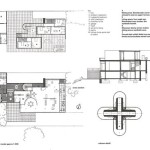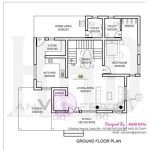Japanese-Style Home Floor Plans: A Guide to Traditional Design
Japanese-style home floor plans, often referred to as "Washoku" designs, embody a philosophy of simplicity, functionality, and connection with nature. These plans offer a unique blend of traditional aesthetics and modern practicality, making them increasingly popular for both traditional and contemporary homes. This article delves into the key characteristics of Japanese-style floor plans, exploring their unique features and the principles that guide their design.
Open and Flexible Spaces
One of the most striking features of Japanese-style homes is their emphasis on open and flexible living spaces. Unlike Western homes that often compartmentalize rooms with walls and doors, Japanese homes prioritize fluidity and adaptability. This is achieved through the use of sliding doors, known as "shoji," and room dividers called "fusuma." Shoji screens, made from translucent paper stretched over a wooden frame, allow light to filter through, creating a soft and diffused atmosphere. Fusuma panels, usually painted with traditional motifs, provide privacy when needed but can be easily moved to create a larger open space. This fluidity allows for different areas of the home to be used in multiple ways, adapting to the needs of the family and the changing seasons.
Connection to Nature
Japanese architecture places a strong emphasis on connecting indoor spaces with the natural environment. This is evident in the use of large windows and open verandahs that blur the boundaries between the inside and outside. Often, gardens are integrated into the floor plan, providing a serene and contemplative space to enjoy the beauty of nature. The incorporation of natural materials like wood and bamboo further enhances the sense of connection to the natural world. These design elements aim to create a harmonious balance between the built and the natural environment, fostering a sense of tranquility and well-being.
Mindfulness in Design
Japanese-style floor plans reflect a deep appreciation for simplicity and functionality. This is evident in the use of minimal furniture and decor, allowing space for quiet contemplation and a focus on the essential elements of life. Every aspect of the design, from the placement of windows to the choice of materials, is carefully considered to create a sense of order and harmony. This minimalist approach fosters a sense of mindfulness, allowing residents to appreciate the beauty in the everyday and find peace amidst the hustle and bustle of modern life.
Key Elements of Japanese-Style Floor Plans
Japanese-style floor plans incorporate several key elements that contribute to their unique aesthetic and functionality:
- Tatami Flooring: Traditionally, Japanese homes feature tatami mats, woven from rush grass and used as flooring. Tatami mats are not only aesthetically pleasing but also help to regulate humidity and provide insulation. They also act as a unit of measurement, with standard tatami mats measuring about 1.65 meters by 0.9 meters.
- Engawa: A verandah or porch that runs along the edge of the house, acting as a transition zone between the interior and exterior. Engawa often features wooden floors and sliding doors, allowing residents to enjoy fresh air and sunlight while maintaining a connection to the house.
- Genkan: The entrance area of a Japanese home, typically a raised platform that serves as a transition zone between the outside world and the interior. Genkan is often used for taking off shoes and storing footwear.
- Tokonoma: A recessed alcove in the main living area, typically used for displaying art, flowers, or other objects of beauty. The Tokonoma is a focal point of the room, adding a sense of elegance and sophistication.
While Japanese-style floor plans are rooted in tradition, they can be adapted to modern lifestyles and preferences. Architects and designers are increasingly incorporating elements of Japanese design into contemporary homes, creating spaces that are both functional and aesthetically pleasing. This trend highlights the enduring appeal of Japanese architecture, which continues to inspire and influence design trends around the world.

Traditional Japanese House Style Plans

Traditional Japanese Home Floor Plan Cool House Plans Ideas Des Architecture Style

Japanese Home Design Ideas Pictures 331 Sqm Homestyler

Cool Traditional Japanese House Floor Plans Unique Home Design

Japanese Home Design Ideas Pictures 331 Sqm Homestyler

Traditional Japanese House Floor Plan Google Search Plans

98 Japanese Traditional Floor Plans Ideas House Architecture

Gallery Of Koya No Sumika Ma Style Architects 16 Minimalist House Design Japanese Home Floor Plan

The Floor Plan Of Apartments In Japan Japanese Home Archi Designer

3ldk Traditional Style House For Saitama Floor Plan Blog








